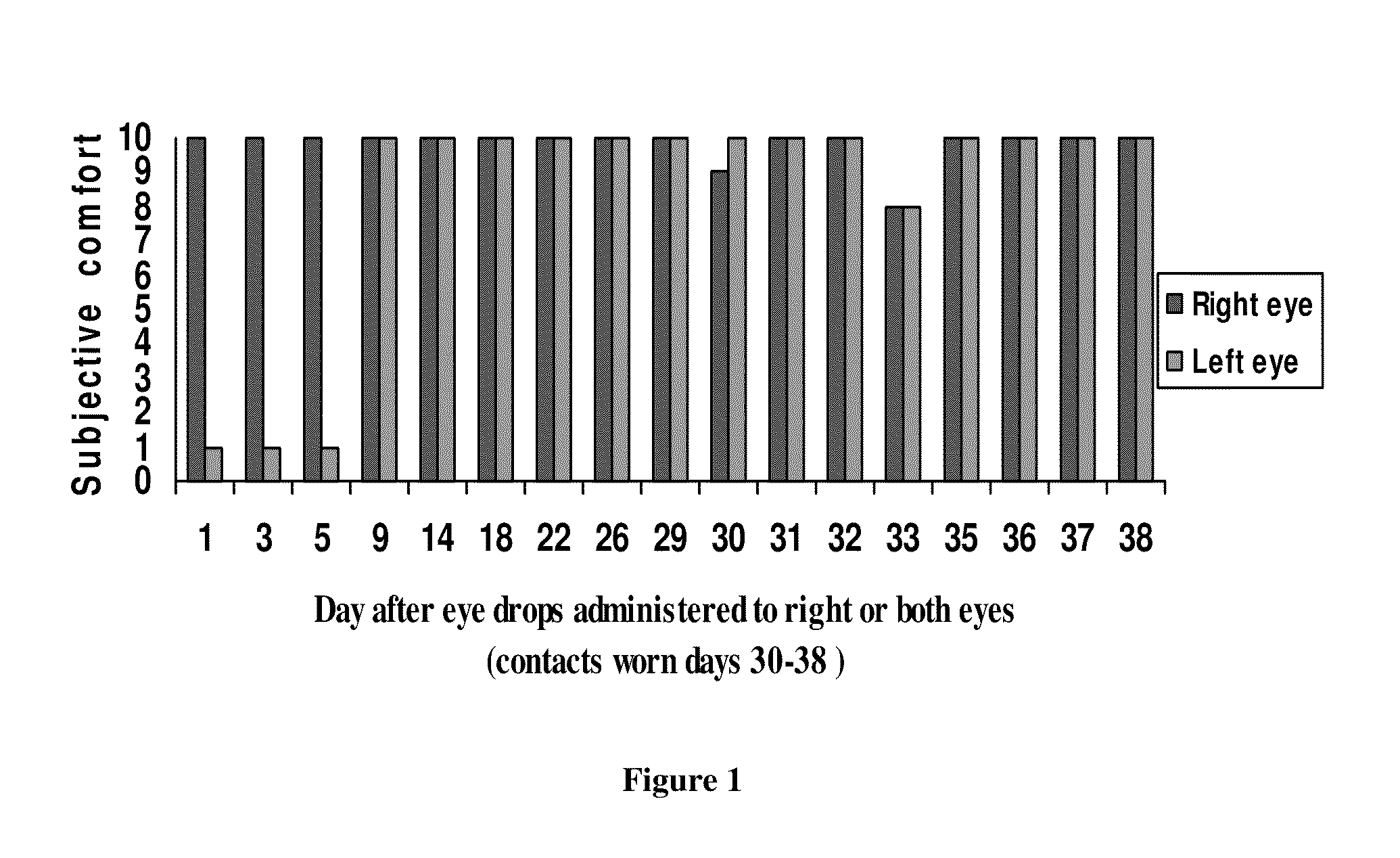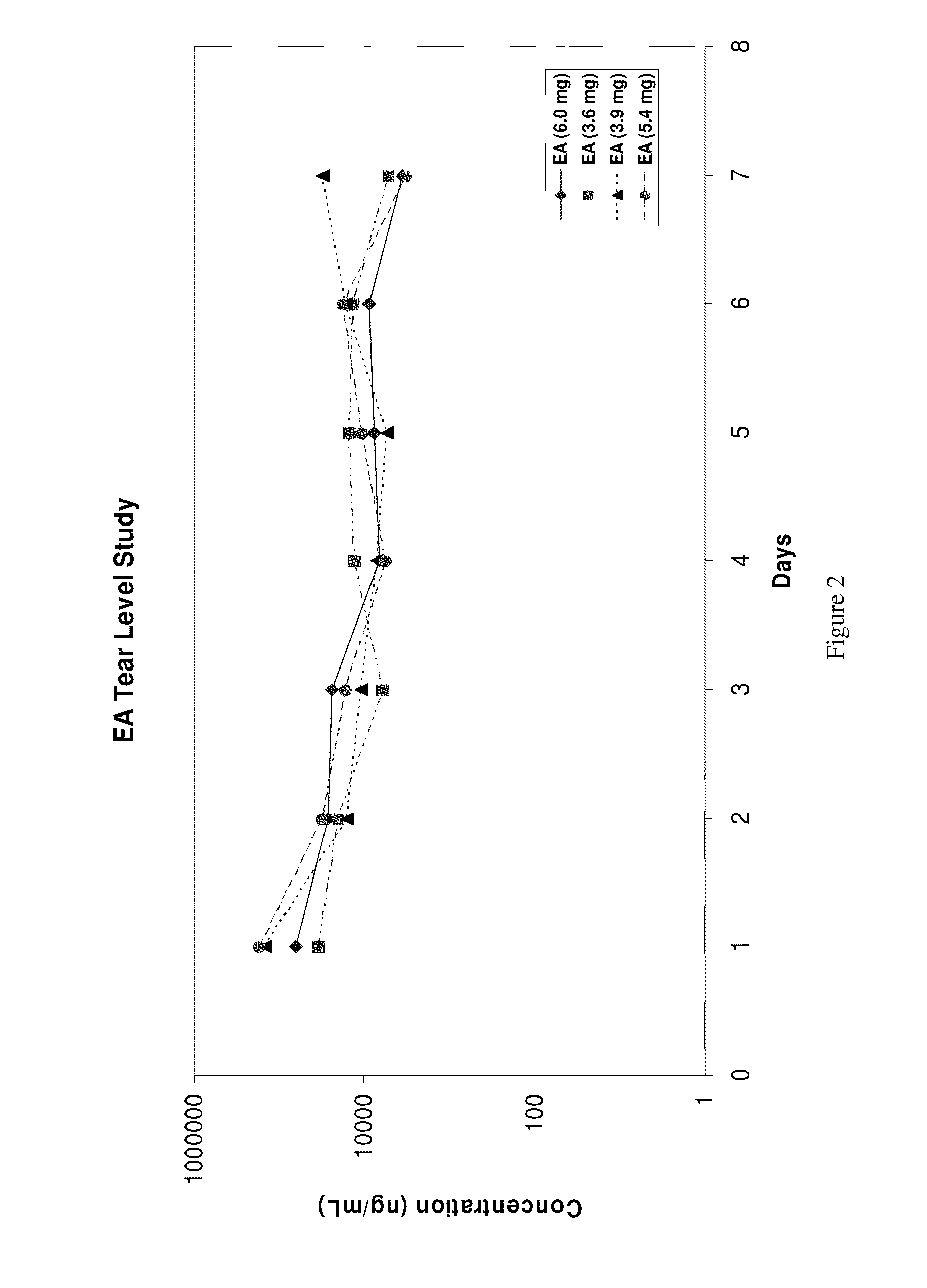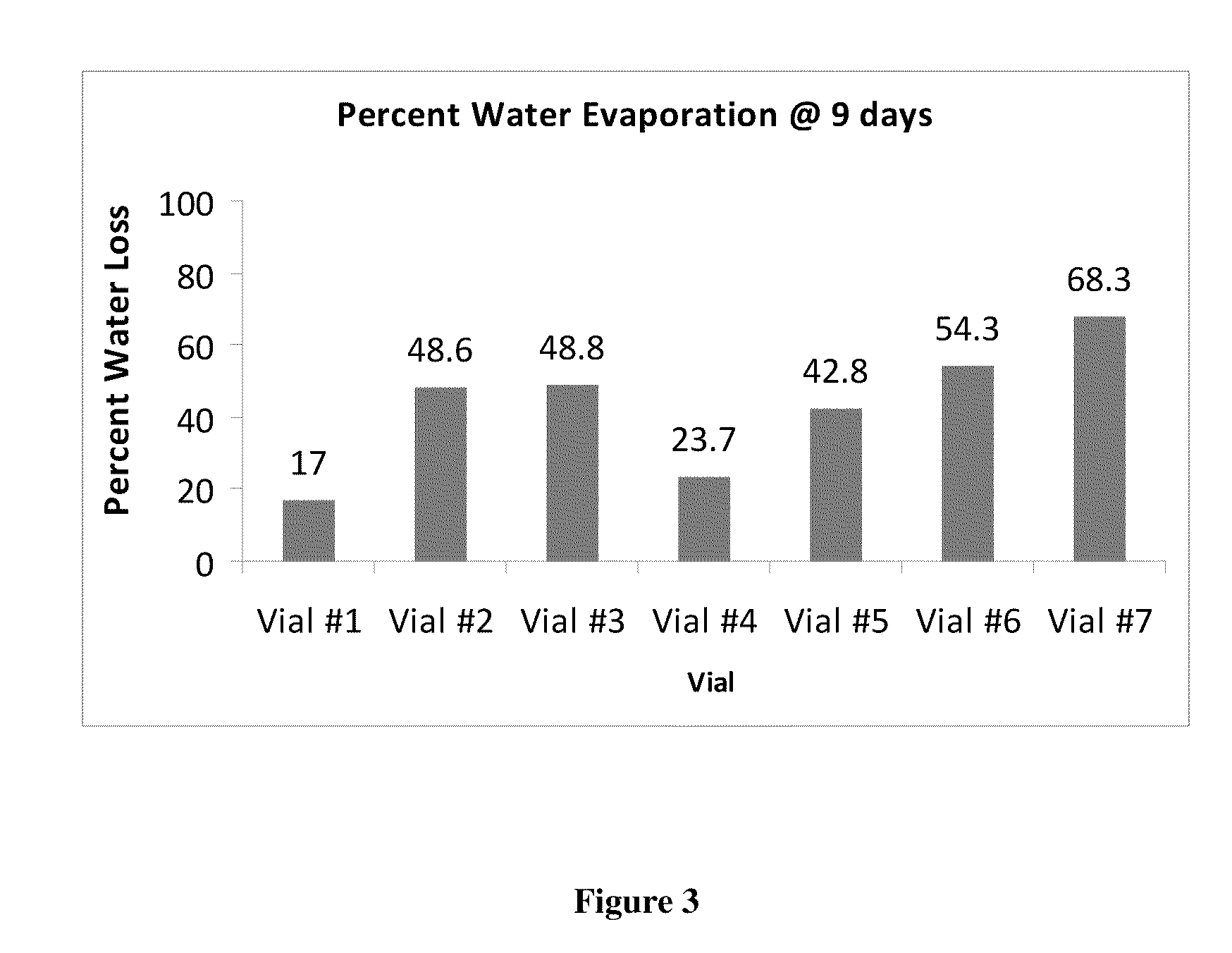Composition and method for treating dry eye syndrome
a technology of compound and dry eye syndrome, applied in the field of compound and method for alleviating symptoms can solve the problems of dry eye syndrome, watery eyes, and insufficient eye tears, and achieve the effects of long-lasting, safe, and relatively inexpensiv
- Summary
- Abstract
- Description
- Claims
- Application Information
AI Technical Summary
Benefits of technology
Problems solved by technology
Method used
Image
Examples
example 1
Topical Application of α-Tocopheryl Acetate
[0029]One drop of α-tocopheryl acetate, about 5 μl in size, was applied as a drop in the right eye of one human volunteer, and in each of the eyes of another human volunteer, each of whom suffered from symptoms associated with dry eye syndrome and had active outdoor lifestyles. No irritation or blurred vision was reported. Both volunteers reported relief from dry eye symptoms for several days with no repeat applications of α-tocopheryl acetate during that time. Both subjects reported that relief from dry eye symptoms lasted for at least one day. One subject reported that the relief lasted at least seven days.
example 2
Alleviation of Cde Symptoms in Contact Lenses-Wearing Individual
[0030]A 53-yr-old female volunteer used one drop of α-tocopheryl acetate in one or more eyes at night, and reported the irritation or comfort on a subjective scale of 1-to-10, (maximum irritation “1”, maximum comfort “10”) as shown in FIG. 1. At days 1 to 5, the individual placed one drop in the right eye only. The individual enjoyed comfort for up to five days before re-applying eyedrops. The individual was able to wear contact lenses (days 30-38) in relative comfort although she did not apply the eyedrops every single night.
example 3
Sustained Release of α-Tocopheryl Acetate in the Tears of Rabbits Administered a Single Drop of α-tocopheryl Acetate
[0031]Four adult New Zealand White (NZW) rabbits (two females, two males) each weighing 4.5 kilo to 5.0 kilo were used in this example. One drop of α-tocopheryl acetate, each weighing 3.6 mg, 3.9 mg, 5.4 mg and 6.0 mg, was instilled onto one eye of each animal. Tear samples were collected daily by filter paper, weighed, eluted in 300 μl MeOH and analyzed for tocopheryl acetate (EA) by LC / MS / MS. Detected tear levels of EA over a seven-day period ranged from 15 μg / ml to 36 μg / ml with a mean of 26 μg / ml (26,000 ng / ml). See FIG. 2. Detectable levels of EA in the cul-de-sac of the rabbit eye may last beyond seven days.
PUM
| Property | Measurement | Unit |
|---|---|---|
| aqueous | aaaaa | aaaaa |
| stable | aaaaa | aaaaa |
| compositions | aaaaa | aaaaa |
Abstract
Description
Claims
Application Information
 Login to View More
Login to View More - R&D
- Intellectual Property
- Life Sciences
- Materials
- Tech Scout
- Unparalleled Data Quality
- Higher Quality Content
- 60% Fewer Hallucinations
Browse by: Latest US Patents, China's latest patents, Technical Efficacy Thesaurus, Application Domain, Technology Topic, Popular Technical Reports.
© 2025 PatSnap. All rights reserved.Legal|Privacy policy|Modern Slavery Act Transparency Statement|Sitemap|About US| Contact US: help@patsnap.com



